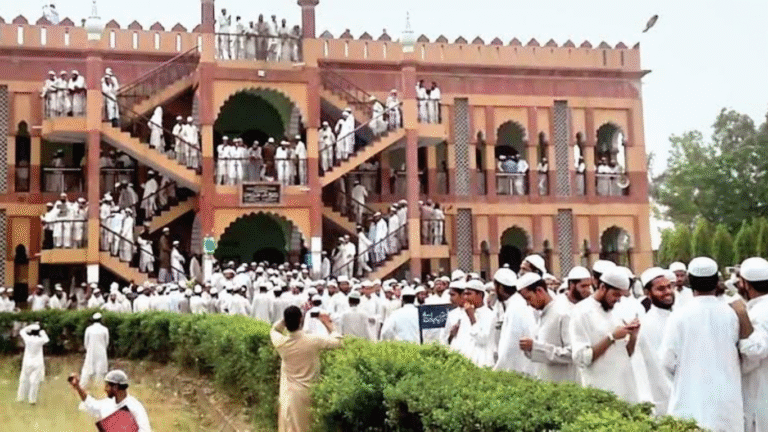
Jaunpur and Ayodhya, two historic cities in Uttar Pradesh, are steeped in culture and spirituality, making the journey between them a meaningful one. The Jaunpur to Ayodhya distance is about 110 kilometers (68 miles) by road, a trip that connects the Mughal heritage of Jaunpur with the sacred birthplace of Lord Rama in Ayodhya. Whether you’re a pilgrim, a tourist, or just visiting family, this guide covers everything you need to know about the distance, travel options, and why this route is so special. From trains to buses to cars, here’s how to make your journey smooth and memorable.
How Far is Jaunpur to Ayodhya by Road?
The road distance from Jaunpur to Ayodhya is roughly 110 kilometers, making it a manageable drive of about 2.5 to 3 hours. The most popular route is via NH135A and NH27, passing through towns like Shahganj and Akbarpur. This well-maintained highway offers scenic views of rural Uttar Pradesh, with fields and small villages along the way. Traffic can slow you down near Ayodhya, especially during festivals like Ram Navami, so plan for extra time. Taxis or private cabs from Jaunpur’s Olandganj or Civil Lines cost around ₹1500-₹2000 one way. Self-driving is also an option, but check road conditions, especially during monsoons when some stretches may get muddy. Carry water and snacks, as roadside eateries are limited outside major towns.
Traveling by Train from Jaunpur to Ayodhya
Trains are a convenient and budget-friendly way to cover the Jaunpur to Ayodhya distance. The rail route is slightly longer, around 115-120 kilometers, due to the track’s path. Jaunpur Junction (JNU) or Jaunpur City (JOP) connects to Ayodhya Junction (AY) or Faizabad Junction (FD), with over 10 daily trains like the Doon Express and Ganga Sutlej Express. The journey takes about 2 to 3 hours, with tickets costing ₹80 for general seats and up to ₹400 for AC classes. Trains are reliable, but book early during peak seasons like Diwali or Ram Navami. Jaunpur Junction’s proximity to the city center makes it easy to reach, and Ayodhya’s stations are close to key temples. Use apps like IRCTC or RailYatri to check schedules and book tickets in advance.
Bus Options for Jaunpur to Ayodhya
Buses are another great way to travel the 110-kilometer Jaunpur to Ayodhya distance. Uttar Pradesh State Road Transport Corporation (UPSRTC) operates regular buses from Jaunpur’s main bus stand near Civil Lines to Ayodhya’s bus station. The trip takes around 3 to 3.5 hours, with fares starting at ₹100 for non-AC buses and up to ₹200 for AC coaches. Private operators like RedBus also run comfortable buses with amenities like cushioned seats. Buses are frequent, especially in the morning, but schedules can shift during festivals. The route along NH135A offers views of rural landscapes, making the ride pleasant. Book tickets online or at the bus stand, and arrive early to grab a good seat. Carry a light jacket, as AC buses can get chilly.
Why Travel from Jaunpur to Ayodhya?
The Jaunpur to Ayodhya distance is short enough for a day trip, but the journey offers so much more than just travel. Ayodhya, known as the birthplace of Lord Rama, draws millions for its temples like Ram Janmabhoomi and Hanuman Garhi. From Jaunpur, it’s an easy trip to explore these spiritual sites or attend events like the Ram Leela. Jaunpur’s own history, with landmarks like Atala Masjid, complements Ayodhya’s sacred vibe, making this route a blend of cultures. For locals, it’s a vital link for family visits, business, or education, as Ayodhya is a growing hub. Whether you’re a pilgrim seeking blessings or a traveler soaking in history, this 110-kilometer journey connects you to the heart of Uttar Pradesh’s heritage.
Tips for a Smooth Journey
To ensure a hassle-free trip from Jaunpur to Ayodhya, a little planning goes a long way. For road travel, start early to avoid traffic, especially near Ayodhya during festivals. Pack snacks and water, as food stops are sparse on NH135A. If taking a train, book tickets through IRCTC or RailYatri at least a week in advance for busy seasons. Arrive at Jaunpur Junction 15-20 minutes early to navigate crowds. For buses, check UPSRTC or RedBus for schedules, and keep some cash handy for offline tickets. Wear comfortable clothes and shoes, especially if visiting Ayodhya’s temples, which involve walking. Carry a valid ID for train travel, and check weather updates, as monsoons can affect roads. With these tips, your 110-kilometer journey will be smooth and enjoyable.
The Cultural Connection Between Jaunpur and Ayodhya
Jaunpur and Ayodhya share a deep cultural bond, making the short distance between them feel even more special. Jaunpur, with its Mughal-era architecture and vibrant markets, contrasts beautifully with Ayodhya’s ancient temples and spiritual energy. Both cities are steeped in history, from Jaunpur’s Sharqi dynasty to Ayodhya’s Ramayana legacy. The 110-kilometer route is a lifeline for locals, supporting trade, family ties, and pilgrimages. For tourists, it’s a chance to explore two sides of Uttar Pradesh—Jaunpur’s forts and mosques and Ayodhya’s sacred sites. Festivals like Ram Navami bring these cities closer, as travelers from Jaunpur flock to Ayodhya for celebrations. This journey weaves together stories of faith, history, and community, making it a must-do for anyone in the region.
Future of Travel Between Jaunpur and Ayodhya
The Jaunpur to Ayodhya route is poised for improvements as both cities grow in importance. The government is upgrading NH135A and NH27 to reduce travel time and ease congestion. Indian Railways plans to add more trains and modernize stations like Jaunpur Junction and Ayodhya Junction, making the 115-kilometer rail trip faster. UPSRTC is also introducing eco-friendly buses, including electric models, to enhance comfort and sustainability. As Ayodhya develops as a global pilgrimage hub, the short distance from Jaunpur makes it a key gateway for visitors. Digital tools like online ticketing and real-time traffic apps are making travel planning easier. For now, the 110-kilometer journey remains an affordable, scenic way to connect two of India’s most historic cities.



